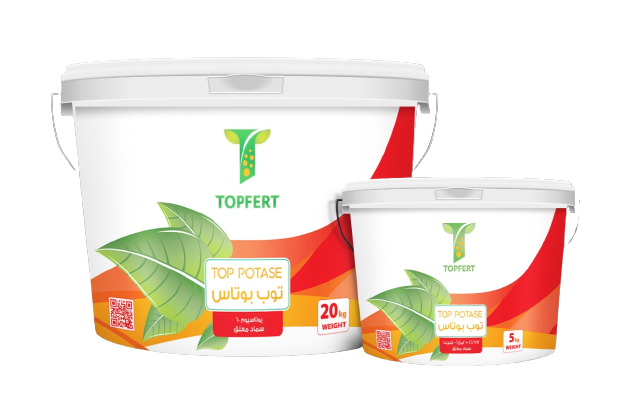TOP POTAS 60
High potassium suspension fertilizer for coloring, sizing and high sugar content
COMPOSITION
- Nitrogen 7%
- Potassium 60%
- Phosphorus 20%
- Sulphur 4.3%
CHARACTERISTICS AND BENEFITS
- TOP POTAS contains a high Potassium and Phosphorous content in addition to Nitrogen and Sulfur in suspension form of high solubility in water. Thus allowing the use of this versatile fertilizer during the stages of flowering, fruiting, development and formation of fruits.
TOP POTAS increases the firmness of potato tubers and tuber crops in general, enhances the quality of fruits and increases their storage and export capacity.
TOP POTAS is used to increase the plant’s ability to withstand adverse environmental stress conditions due to the compound’s containment of Potassium acetate.
TOP POTAS increases the fruits sugar content and enhances the fruit coloring degree as it works to release the pigments responsible for coloring, which gives the fruits a balanced coloring.
TOP POTAS high Phosphorous content enhances the flowering process in plants that are multi-cultivated during the advanced stages of the plant’s life.
- TOP POTAS presence of Potassium in various forms, makes the element more softly absorbed.
TYPES OF CROPS IN WHICH THE COMPOUND IS USED
It is used for all field crops, vegetables and fruits.
USAGE RATES (DOSE/ feddan)
- • In the case of folliar spraying: 150 – 250 g/ 100 L of water, after fruit setting and during the different development stages and repeated according to the plant needs for vegetables and fruits and after expulsion of spikes in field crops.
- • In the case of ground fertilizing:
- Crop type Dosage rate Addition time
- Field crops 2 Kg /Feddan. During the phase of expulsion of the spikes until maturity
- Vegetables 2 – 3 Kg /Feddan. During the stage of formation and ripening of fruits
- Fruits 3 – 4 Kg /Feddan. During the stage of formation and ripening of fruits
DILUTION
- 1.5 -2.5 g/L of water
MIXABILITY
Take into account mixing experiment.
Registration No
13949


